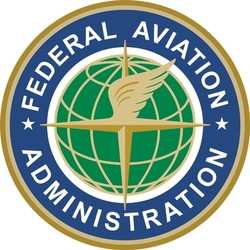Thu, Jun 30, 2016
Analyst Says Rule May Violate Congressional Mandate Against New Model Airplane Rules
An attorney who has analyzed the new FAA rules regarding unmanned aircraft says the new UAS rules may have an adverse effect on the model airplane industry and model airplane flyers.

Writing on the Drone Law Journal online, Loretta Alkalay says that the FAA has added recreational UAV flying to Part 101 of the FARs which governs tethered balloons unmanned rockets, kites, and similar aircraft.
Alkaly says that the new rule is a transfer of statutory language in the FAA Reauthorization and Modernization Act of 2012 that was directed toward the FAA and not the model aircraft community. But the way the rule is written, the requirement that was intended to apply only to the FAA is now binding on model aircraft operators.
So Alkaly says that her interpretation of the rule is that model airplanes are now governed by Part 101 and not Part 107, which requires a requirement for a remote pilot certificate, only if they can meet all of the specific requirements Congress wrote into the FRMA 2012 law to prohibit FAA rulemaking:
- the aircraft is flown strictly for hobby or recreational use;
- the aircraft is operated in accordance with a community based set of safety guidelines and within the programming of a nationwide community-based organization;
- the aircraft is limited to not more than 55 pounds unless otherwise certified through a design, construction, inspection, flight test, and operational safety program administered by a community-based organization;
- the aircraft is operated in a manner that does not interfere with and gives way to any manned aircraft; and
- when flown within 5 miles of an airport, the operator of the aircraft provides the airport operator and the airport air traffic control tower (when an air traffic facility is located at the airport) with prior notice of the operation (model aircraft operators flying from a permanent location within 5 miles of an airport should establish a mutually-agreed upon operating procedure with the airport operator and the airport air traffic control tower (when an air traffic facility is located at the airport)).
In other words, a hobby flyer who does not meet the requirements for Part 101 would be assumed to be operating under Part 107, and failure to meet the requirements of Part 107, including holding a remote operator's certificate, could result in penalties being imposed by the FAA.
The bottom line, Alkalay says, is that hobby fliers are now faced with uncertainty as to whether they can continue to enjoy their hobby once the new Part 101 and Part 107 rules go into effect in August.
More News
He Attempted To Restart The Engine Three Times. On The Third Restart Attempt, He Noticed That Flames Were Coming Out From The Right Wing Near The Fuel Cap Analysis: The pilot repor>[...]
Make Sure You NEVER Miss A New Story From Aero-News Network Do you ever feel like you never see posts from a certain person or page on Facebook or Instagram? Here’s how you c>[...]
From 2009 (YouTube Edition): Leading Air Show Performers Give Their Best Advice for Newcomers On December 6th through December 9th, the Paris Las Vegas Hotel hosted over 1,500 air >[...]
Aero Linx: NASA ASRS ASRS captures confidential reports, analyzes the resulting aviation safety data, and disseminates vital information to the aviation community. The ASRS is an i>[...]
“For our inaugural Pylon Racing Seminar in Roswell, we were thrilled to certify 60 pilots across our six closed-course pylon race classes. Not only did this year’s PRS >[...]
 NTSB Final Report: Rutan Long-EZ
NTSB Final Report: Rutan Long-EZ ANN FAQ: Turn On Post Notifications
ANN FAQ: Turn On Post Notifications Classic Aero-TV: ICAS Perspectives - Advice for New Air Show Performers
Classic Aero-TV: ICAS Perspectives - Advice for New Air Show Performers ANN's Daily Aero-Linx (06.28.25)
ANN's Daily Aero-Linx (06.28.25) Aero-News: Quote of the Day (06.28.25)
Aero-News: Quote of the Day (06.28.25)



